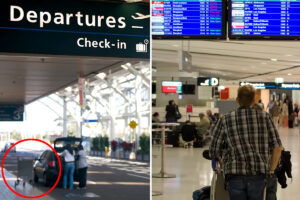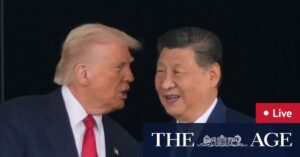
The United Kingdom and Australia are set to solidify their commitment to the AUKUS submarine pact through a new 50-year treaty, aiming to enhance shipbuilding capabilities in both nations. This development occurs as the Trump administration continues to scrutinize the ambitious technology-sharing agreement.
The announcement is expected to be made by Foreign Minister Penny Wong and Defence Minister and Deputy Prime Minister Richard Marles, alongside their British counterparts David Lammy and John Healey, following the annual AUKMIN talks in Sydney. The formal signing will occur in Geelong, with Mr. Marles and Mr. Healey officiating the event.
Details of the AUKUS Treaty
While the complete details of the treaty remain under wraps, it is anticipated to encompass extensive cooperation between the UK and Australia in developing the next-generation AUKUS nuclear-powered submarine. This includes workforce development and the necessary infrastructure for Australia to operate and sustain this sophisticated military platform.
The treaty comes amid visits by Britain’s defence and foreign ministers to Australia, underscoring the importance of the bilateral relationship. In a statement, Mr. Healey described the treaty as “historic,” emphasizing its potential to deliver more than $40 billion in exports to the UK over the next 25 years.
“Through the treaty, we are supporting high-skilled, well-paid jobs for tens of thousands of people in both the UK and Australia,” Mr. Healey stated.
Strategic Importance and Economic Implications
Foreign Secretary David Lammy highlighted the unique nature of the UK–Australia relationship, noting its significance in maintaining global peace and prosperity in an increasingly volatile world. He described the new bilateral AUKUS treaty as a safeguard for a free and open Indo-Pacific, while also catalyzing economic growth for both nations.
According to Euan Graham from the Lowy Institute, the treaty reflects the essential role of the UK-Australia partnership within the broader AUKUS arrangement, which also includes the United States. He noted that the UK Labour government views the treaty as a means to achieve economies of scale, potentially expanding the Royal Navy’s submarine force from seven to twelve vessels.
“The first SSN-AUKUS won’t be completed for another 12 years at the earliest, but this treaty should enable a greater level of synchronization,” Graham explained.
Challenges and Considerations
While Australia has committed to constructing all AUKUS submarines domestically, Graham advises caution against excluding the possibility of building some in the UK. He emphasized the need to balance domestic production with the urgency of delivery.
“Australia also needs to balance its commitment to building all of its future boats in Adelaide against the requirement for delivery as speedily as possible,” Graham said. “That might be the point to focus on carefully in this treaty.”
US Involvement and Concerns
Meanwhile, the US remains a critical player in the AUKUS pact. Elbridge Colby, a top US Defence official, has expressed concerns about the agreement, suggesting that selling Virginia Class submarines to Australia in the 2030s could compromise US national security. This has led to speculation about potential new demands from the US to ensure continued support.
One UK government official remarked that both the UK and Australia are sending a “clear and obvious” signal to the Trump administration of their unwavering support for AUKUS.
Future Prospects and Strategic Visits
The federal government has already allocated over $4 billion to boost submarine production in the UK, collaborating on the co-design of the next-generation AUKUS submarine and the development of small-scale nuclear reactors to power them. Despite this, Australia has not committed additional direct funding to the UK submarine industrial base under the new treaty.
Following their meetings in Sydney and Geelong, the ministers will visit Darwin to observe the UK aircraft carrier HMS Prince of Wales participating in the Talisman Sabre military exercises. This event, involving over 30,000 military personnel from nearly two dozen countries, marks the first visit of a UK aircraft carrier to Australia in over two decades.
The British government asserts that this visit underscores its commitment to maintaining a presence in the Indo-Pacific region, despite ongoing challenges such as Russia’s invasion of Ukraine.
As the AUKUS treaty takes shape, its long-term impact on regional security and economic growth remains a focal point for both nations, with implications that could extend well beyond the next five decades.






